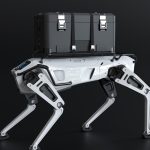The future of humanoid robots is poised for substantial growth as analysts project significant economic opportunities. With advances in technology and robotics, companies are increasingly exploring the potential applications of humanoid robots in various sectors. The forecast demonstrates a potential market opportunity that is expected to influence both the commercial and industrial environments significantly. The shift towards robotics marks an intriguing evolution in labor distribution and corporate strategy.
Recent projections by Morgan Stanley highlight an optimistic future for humanoid robots, estimating the potential of generating $5 trillion in revenue by 2050. This expected growth represents considerable progress compared to earlier forecasts where the use of humanoid robots was mainly concentrated in limited sectors. As companies advance in developing these robots, the scale of adoption across industries is expected to increase, emphasizing the expanding role of technology in economic structures.
What Are the Market Predictions?
Morgan Stanley analysts have suggested that humanoid robots could become significantly integrated into many sectors, predicting one billion deployments by mid-century. While this number represents a large portion, the analysts emphasize that the primary applications will be in industrial and commercial settings rather than personal use. This trend is expected to be gradual, with 13 million robots estimated for use by 2035, slowly increasing to 1 billion by 2050. Industry reliance on humanoid robots underlines the growth potential within manufacturing and logistics.
How Could Tesla Impact This Growth?
Tesla emerges as a key player in the humanoid robot sector, mainly through its Optimus program. Morgan Stanley has pointed out Tesla’s unique positioning due to its control over the key facets of robot development. This strategic advantage potentially places Tesla at the forefront of leveraging this growing market. Elon Musk’s vision for Optimus, stated as a potential product of immense scale, aligns with these predictions.
Are There Potential Labor Market Impacts?
The integration of humanoid robots into the workforce is predicted to have a notable effect on employment, with an estimated 62.7 million jobs potentially affected by 2050. Initially affecting around 40,000 roles by 2030, this change signifies a shift in labor dynamics. As automation becomes more commonplace, businesses and individuals may need to adapt to new ways of working and interacting with these emerging technologies.
The long-term implications of humanoid robots include their widespread adoption across various sectors, potentially streamlining manual and labor-intensive processes. Businesses must align strategically with this evolution in technology, potentially reshaping labor markets and economic policies. Leveraging these technologies could mean redefined human roles in the workforce, complemented by machines designed to enhance productivity. Insightful strategies will be necessary to balance growth in robotics with human employment, particularly as technology becomes indispensable in periods of burgeoning industrial development.










